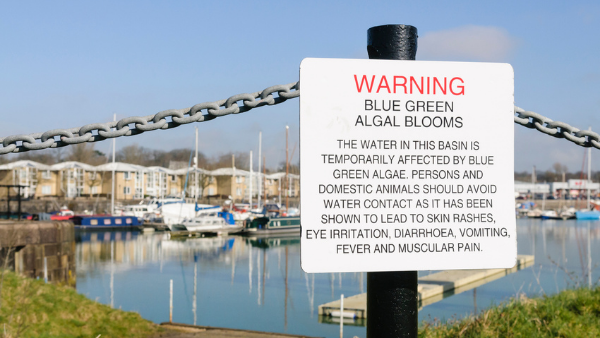The purpose of this article is to explain the basics of nutrient neutrality. Further and more detailed information about the specific elements of this topic can be found on our website.
What is Nutrient Neutrality?
Nutrient neutrality is the outcome achieved when a particular land use or a specific development, within catchment areas of vulnerable watercourses, does not result in an increase in phosphate and nitrate levels in those watercourses beyond current levels. Excess phosphates and nitrates contribute to the growth of algal blooms, leading to eutrophication, which causes oxygen levels for fish and other aquatic life to be reduced significantly.
Dutch N case
The issue arose following the European Court of Justice ruling in the landmark ‘Dutch N’ case in November 2018. This decided that projects or plans must not have a significant adverse effect on site conservation objectives.
In the UK, Natural England picked up on the problem and issued guidance to several Local Planning Authorities (LPAs) between 2020 and 2021 about the risk of permitting changes in land use and development in nutrient vulnerable areas.
In two previous articles, “Planning & nitrate neutrality: Legal challenge to Natural England’s guidance” and “Planning and nitrate neutrality: the High Court backs Natural England’s guidance”, we reported on legal challenges to the validity of the guidance applicable to the Solent, in the case of R(Wyatt) v Fareham Borough Council. The High Court decision in that case, to dismiss an application for Judicial Review of the decision to grant planning permission, has since then been appealed. The hearing in the Court of Appeal was held on 5 and 6 April 2022 and we are currently awaiting judgment.
The Natural England guidance focuses particularly on development within Special Areas of Conservation (SACs), Special Protection Areas (SPAs) and Ramsar Sites (i.e., wetlands of international importance), with an aim to achieve nutrient neutrality.
The key areas targeted by Natural England (amongst others) include:
- Cornwall – the Camel estuary;
- Essex – the Orwell and the Stour;
- Kent – the Great Stour;
- Hampshire and Dorset – the Solent;
- Herefordshire – the Wye and the Lugg;
- Shropshire – the Clun;
- Somerset – the Levels;
- Suffolk – the Deben estuary; and
- Wiltshire – the Avon.
Coastal and marine areas such as the Solent suffer from an excess of nitrates, whereas for inland freshwater environments such as the Somerset Levels it is phosphates that are of concern.
On 16 March 2022, Natural England issued a letter to a further 42 LPAs as well as the existing 32 LPAs, bringing the total number of affected LPAs to 74. Previously unaffected LPAs in areas such as Cumbria, Northumberland, Cheshire and parts of Yorkshire, for example, will now have to implement mitigation plans for new developments.
Natural England provided an updated national map showing the affected catchments. As a result, some existing areas have been assigned new catchments, that now need to be nutrient neutral. The new advice includes a ‘National Generic Nutrient Neutrality Methodology’ along with specific catchment calculators.
Types of development
Although evidence has demonstrated that residential development contributes to high levels of nutrients in the water, the nutrient neutrality obligation does not just affect residential development. All changes to land use or development that might cause additional nutrient loading are caught.
Habitats Regulations Assessments (HRA)
As a result of the Conservation of Habitats and Species Regulations 2017 (as amended), LPAs now require HRAs for proposed changes in land use or development in affected areas. This is to ascertain whether there will be any adverse effects due to the project’s location, size or nature. Mitigation solutions have been required where adverse effects have been found.
The ‘Appropriate Assessment’ (AA) stage of the HRA must be carried out before an LPA will grant planning permission. Natural England advises that the LPA must have practical certainty, that the nutrient neutrality measures, relied on in an AA, will be implemented and in place at the relevant time, when the AA is undertaken, e.g. secured and funded for the lifetime of the development’s effects. In addition, all HRAs must be undertaken in consultation with Natural England.
Previously consented, as well as existing schemes are caught. This includes LPAs discharging planning conditions, approving reserved matters or granting minor amendments to existing planning consents.
LPAs have embargoed granting planning consents or discharging conditions until clear HRA assessments or solutions have been put in place and are proven to work. The embargoes have created immense delays and additional expenses to residential development in affected LPA areas. The Housebuilders Federation (HBF) estimates that 50-60k new homes are currently held up. HBF also estimates that the cost of mitigating phosphate, for example, is around £5,000 per consented dwelling.
Calculating the nutrient burden
The generic methodology produced by Natural England involves a four stage process for determining a nutrient budget for a given development; this takes into account the operational catchment, soil drainage type, average annual rainfall and whether the site is within a Nitrate Vulnerable Zone (NVZ):
A .Calculate the proposed development’s total nitrogen/phosphate that would be discharged into the catchment;
B. Calculate existing (pre-development) nitrogen/phosphate from the current land use of the development site;
C. Calculate nitrogen/phosphate for the non-built land uses proposed for the development site, such as public open space; and
D. Calculate the change in total nitrogen/phosphate due to the development: (A – B +/- C) including the 20% precautionary buffer.
If the result of Stage 4 is positive, then mitigation is required. If it is negative, mitigation is not required.
Each LPA has been provided with catchment-specific calculators to support a consistent approach to the assessment of nutrient neutrality across all affected catchments in England.
On-site options
It is possible to achieve nutrient neutrality on-site, via the creation of large-scale wetlands, woodlands and fallow habitats. However, in practice, this is unlikely, unless there is a significant open space provision within the development boundary, as neutrality measures are often very onerous and land-hungry. Solutions need to be available and work in perpetuity or at least for as long as the development is required, which is a heavy burden on developers. Packaged private water treatment plants are one solution, but require material investment in front end infrastructure before other development can take place.
Off-site options
Off-site options are emerging as more popular alternative mitigation solutions and one approach is to purchase nutrient ‘credits’. Third-party landowners are beginning to take agricultural land out of production and change the land use to woodland, heathland, saltmarsh, wetland, or conservation grassland to generate credits. For example, agricultural land used for poultry has a nitrogen leaching rate of 70.7 kgN/ha/yr, whereas woodland has a leaching rate of 5 kgN/ha/yr, creating a healthy nutrient deficit, which can be used to offset the effects of development.
Natural England advises that mitigation land is maintained for a minimum of 80-125 years. This significant obligation means that many developers may wish to buy credits from third-party landowners, in a one-time transaction, allowing the developers to move on without the need to maintain the habitat themselves.
Many landowners are exploring the ability to benefit from several positive environmental outcomes on the same piece of land. This may include the receipt of both public money, in the form of the new Environmental Land Management Scheme (ELMS) and private funds, such as those arising from nutrient neutrality.
Unlike the new mandatory biodiversity net gain requirement, Natural England has called for mitigation sites to be provided within the same local catchment area as the development. This greatly reduces the potential to find off-site land to deliver solutions at a viable cost.
LPAs are considering, or in some cases are already implementing, similar nutrient neutrality credit schemes of their own. For example, Havant Borough Council is the first LPA to develop its own nutrient neutrality scheme. Under this scheme, the proceeds of the credits go towards the creation of large-scale wetlands, woodlands and meadows to mitigate against the effect of development.
Example of credit calculation in the Itchen catchment of the Solent region
Nitrogen leaching values of land uses:
- with freely draining soil drainage;
- with an average annual rainfall of 750.1 – 800 (mm); and
- within an NVZ.
| Land use | Area (ha) | Nitrogen leaching rate (kg/ha/yr) |
| Cereals | 5 | 143.8 |
| General | 5 | 108.25 |
| Horticulture | 5 | 109.1 |
| Pig | 5 | 508.29 |
| Poultry | 5 | 392.8 |
| Dairy | 5 | 235.6 |
| Lowland | 5 | 65.65 |
| Mixed | 5 | 131.6 |
| Greenspace | 5 | 15 |
| Woodland | 5 | 15 |
| Shrub | 5 | 15 |
| Water | 5 | 0 |
| Residential urban land | 5 | 72.23 |
| Commercial/industrial urban land | 5 | 38.52 |
| Open urban land | 5 | 42.58 |
| Community food growing | 5 | 77.31 |
Credit calculation
| A | B | C | D | E |
| Leaching value of current land use area | Leaching value of new land use | New leaching value (A-B) | Size of area (ha) | Total credits generated (C x D) |
| 108.25 | 15 | 93.25 | 5 | 466.25 |
For this example, the total payment for converting 5ha of general cropping land to green space creates 466.25 credits and at £3,000/credit, this totals £1,398,750
We are seeing values fluctuating considerably, according to supply and demand, between different catchment areas. This is because in some areas, nitrates are the main problem, whereas in others, phosphates are the issue.
Securing land use change
Conservation covenants are introduced in the Environment Act 2021 and will officially come into force on 30 September 2022. These are private agreements between landowners and “responsible bodies”, such as wildlife trusts. They can be used to enforce future management of mitigation land by creating positive obligations, which bind successors in the title automatically. This accords with Natural England’s view that offsite mitigation land should ideally be maintained in perpetuity.
What does this mean for developers?
We discuss many of these issues in greater detail in our article “Nutrient Neutrality and the Impact on Development” In summary, however, all developers and landowners, with interests in projects or land in affected areas, should reconsider their legal and commercial positions. Prompt action may be necessary and collaboration with landowners and others will be vital in finding the most effective solutions.

